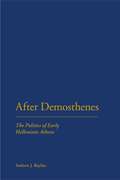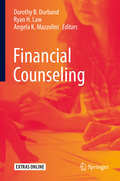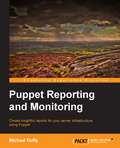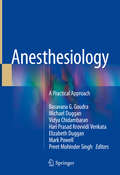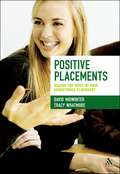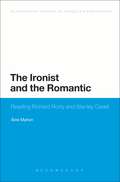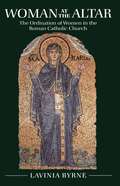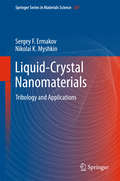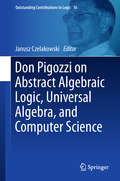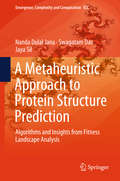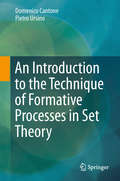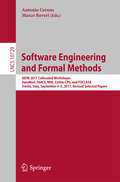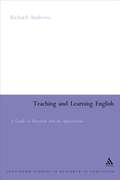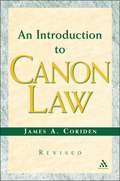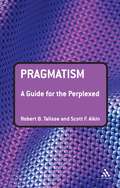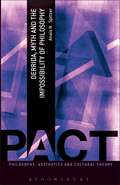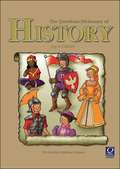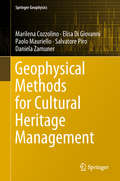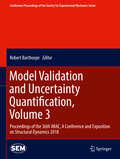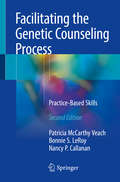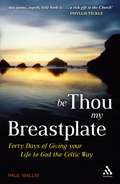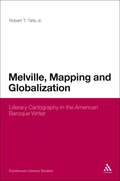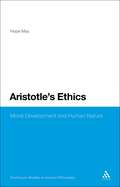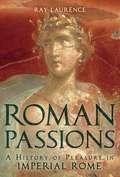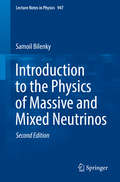- Table View
- List View
After Demosthenes: The Politics of Early Hellenistic Athens
by Andrew J. BaylissThis volume challenges preconceptions of Athenian politics and history. It sets out to demonstrate that the widely received view that Hellenistic Athens and her political leaders were radically different from their Classical counterparts is fundamentally flawed. Through a re-examination of the internal politics of Hellenistic Athens, both in terms of its key institutions and its political leaders, After Demosthenes provides a comprehensive analysis of Athenian political life from 322-262 BC. Drawing on literary and epigraphic evidence the book identifies those who participated in the governing of Athens, and their motives for doing so, and redefines the nature of Athenian political ideology in the process. The leading political figures, each of whom can be identified with a particular ideological viewpoint, are explored in a series of biographical studies. Examining the intellectual origins of modern scholarly criticism of democracy in the Athens of this period, this volume shows how the politics of scholarly discourse have distorted modern views of Hellenistic Athens.
Financial Counseling
by Dorothy B. Durband Ryan H. Law Angela K. Mazzolini"This text is a valuable new resource that we recommend for all of our professionals and are proud to incorporate as part of our AFC® certification program. With expertise representing the breadth and depth of the financial counseling profession, the content in this text provides you with a rigorous foundation of knowledge, considers critical theoretical models, and explores foundational skills of communication, self-awareness, and bias. This type of comprehensive approach aligns with our mission and vision—providing you with the foundational knowledge to meet clients where they are across the financial life-cycle and impact long-term financial capability." -Rebecca Wiggins, Executive Director, AFCPE® (Association for Financial Counseling and Planning Education®)This timely volume presents a comprehensive overview of financial counseling skills in accessible, practical detail for readers throughout the career span. Expert financial counselors, educators, and researchers refer to classic and current theories for up-to-date instruction on building long-term client competence, working with clients of diverse backgrounds, addressing problem financial behavior, and approaching sensitive topics. From these core components, readers have a choice of integrated frameworks for guiding clients in critical areas of financial decision-making. This essential work: · Offers an introduction to financial counseling as a practice and profession · Discusses the challenges of working in financial counseling · Explores the elements of the client/counselor relationship · Compares delivery systems and practice models · Features effective tools and resources used in financial counseling · Encourages counselor ethics, preparedness, and self-awareness A standout in professional development references, Financial Counseling equips students and new professionals to better understand this demanding field, and offers seasoned veterans a robust refresher course in current best practices.
Puppet Reporting and Monitoring
by Michael DuffyAn easy to follow guide with extensive examples to explain Puppet's reporting capabilities to facilitate effective implementation of Puppet in the real world as a reporting tool.If you are a Puppet developer or a system administrator using Puppet, and you want to extend your expertise to manage and optimize your server resources, then this book is for you.
Anesthesiology: A Practical Approach
by Basavana G. Goudra Michael Duggan Vidya Chidambaran Hari Prasad Venkata Elizabeth Duggan Mark Powell Preet Mohinder SinghThis book provides a practical approach to the anesthetic management of surgical and nonsurgical procedures across the spectrum of anesthesia sub-specialties. This book will assist the practitioner to plan their anesthetic from preoperative evaluation phase to complete recovery or transfer to another special care area. The emphasis is on both the planned technique and more importantly the logic or reasoning behind the suggested technique.This book addresses all important procedures in anesthesiology, including preoperative evaluation, airway management, and fluid administration. Every chapter discusses a specific surgery or procedure. Some topics of special interest are also included.Anesthesiology: A Practical Approach is aimed at anesthesia residents, anesthesia nurse practitioners, and experienced anesthesiologists called upon to work in any area or anesthetizing location.
Positive Placements: Making the Most of Your Educational Placement
by David Midwinter Tracy WhatmoreUnsure about where to do your placement? Scared about what might await you? Keen to make the most of every moment? Whether thinking about teaching abroad, working in your local school or supporting learning in an art gallery, this accessible and empowering guide will take you through the placement process and provide all the information you need to make the most of your experience.Case study extracts from past students on a diverse range of placements give a flavour for what its really like to go on placement. Summaries and key points ensure you can find the information youre looking for quickly and reflective questions encourage you to think about and learn from your experiences.The supporting companion website provides links to placement opportunities, ideas to get you started and a complete set of student case studies. A guide for lecturers looking to support students on placement is also available online.The essential guide for all students thinking about going on an educational placement.
The Ironist and the Romantic: Reading Richard Rorty and Stanley Cavell (Bloomsbury Studies in American Philosophy)
by Á Ine MahonAt the time of his death in 2007, Richard Rorty was widely acclaimed as one of the world's most influential contemporary thinkers. Stanley Cavell, who has been a leading intellectual figure from the 1960s to the present, has been just as philosophically influential as Rorty though perhaps not as politically divisive. Both philosophers have developed from analytic to post-analytical thought, both move between philosophy, literature and cultural politics, and both re-establish American philosophical traditions in a new and nuanced key.The Ironist and the Romantic: Reading Richard Rorty and Stanley Cavell finds the sound of Rorty's cheerful pragmatism strikingly at odds with the anxious romanticism of Cavell. Beginning from this tonal discord, and moving through comprehensive comparative analysis on the topics of scepticism, American philosophy, literature, writing style and politics, this book presents the work of its central figures in a novel and mutually illuminating perspective. Á?ine Mahon's unique and original comparative reading will be of interest not only to those working on Rorty and Cavell but to anyone concerned with the current state of American philosophy.
Woman At The Altar: The Ordination of Women in the Roman Catholic Church
by Lavinia ByrneLavinia Byrne believes that the Roman Catholic Church's teaching and pastoral practice is producing vocations to priesthood among women. This book looks forward to the day when Catholic women will be ordained, and addresses questions such as: when and how this might take place; who women are for and against; how women are organized; what the present-day Church thinking is on the subject; whether nuns are uncovering a call to ordination; and whether the ordination of women is a source of division or a source of healing.
Liquid-Crystal Nanomaterials: Tribology and Applications (Springer Series in Materials Science #267)
by Sergey F. Ermakov Nikolai K. MyshkinThis book discusses the tribological, rheological and optical properties of liquid-crystal nanomaterials as well as lubricant media. It also describes the formation of liquid-crystal materials and the application of cholesteric liquid-crystal compounds in technical friction units and in human and animal joints. Further, it shows the connection between the tribological and other physical properties of liquid-crystal cholesterol compounds and develops a lubricity conceptual model of cholesteric–nematic, liquid-crystalline nanostructures on the basis of physical and energetic interpretations. This general model is valid for all surfaces and friction pairs, including biopolymers, and could lead to applications of cholesteric liquid-crystalline nanomaterials in different friction units and tribosystems as well as in the treatment of joint diseases.
Don Pigozzi on Abstract Algebraic Logic, Universal Algebra, and Computer Science (Outstanding Contributions to Logic #16)
by Janusz CzelakowskiThis book celebrates the work of Don Pigozzi on the occasion of his 80th birthday. In addition to articles written by leading specialists and his disciples, it presents Pigozzi’s scientific output and discusses his impact on the development of science. The book both catalogues his works and offers an extensive profile of Pigozzi as a person, sketching the most important events, not only related to his scientific activity, but also from his personal life. It reflects Pigozzi's contribution to the rise and development of areas such as abstract algebraic logic (AAL), universal algebra and computer science, and introduces new scientific results. Some of the papers also present chronologically ordered facts relating to the development of the disciplines he contributed to, especially abstract algebraic logic. The book offers valuable source material for historians of science, especially those interested in history of mathematics and logic.
A Metaheuristic Approach to Protein Structure Prediction: Algorithms and Insights from Fitness Landscape Analysis (Emergence, Complexity and Computation #31)
by Nanda Dulal Jana Swagatam Das Jaya SilThis book introduces characteristic features of the protein structure prediction (PSP) problem. It focuses on systematic selection and improvement of the most appropriate metaheuristic algorithm to solve the problem based on a fitness landscape analysis, rather than on the nature of the problem, which was the focus of methodologies in the past. Protein structure prediction is concerned with the question of how to determine the three-dimensional structure of a protein from its primary sequence. Recently a number of successful metaheuristic algorithms have been developed to determine the native structure, which plays an important role in medicine, drug design, and disease prediction. This interdisciplinary book consolidates the concepts most relevant to protein structure prediction (PSP) through global non-convex optimization. It is intended for graduate students from fields such as computer science, engineering, bioinformatics and as a reference for researchers and practitioners.
An Introduction to the Technique of Formative Processes in Set Theory
by Domenico Cantone Pietro UrsinoThis book presents an intuitive picture-oriented approach to the formative processes technique and to its applications. In the first part the authors introduce basic set-theoretic terminology and properties, the decision problem in set theory, and formative processes. The second part of the book is devoted to applications of the technique of formative processes to decision problems. All chapters contain exercises and the book is appropriate for researchers and graduate students in the area of computer science logic.
Software Engineering and Formal Methods: SEFM 2017 Collocated Workshops: DataMod, FAACS, MSE, CoSim-CPS, and FOCLASA, Trento, Italy, September 4-5, 2017, Revised Selected Papers (Lecture Notes in Computer Science #10729)
by Antonio Cerone Marco RoveriThis book constitutes revised selected papers from the five workshops collocated with the 15th International Conference on Software Engineering and Formal Methods, SEFM 2017. The 38 papers presented in this volume were carefully reviewed and selected from a total of 55 submissions. They stem from the following workshops: DataMod 2017 -- 6th International Symposium “From Data to Models and Back"; FAACS 2017 -- 1st Workshop on Formal Approaches for Advanced Computing Systems; MSE 2017 -- 1st Workshop on Microservices: Science and Engineering; CoSim-CPS 2017 -- 1st Workshop on Formal Co-Simulation of Cyber-Physical Systems; FOCLASA 2017 -- 15th International Workshop on Foundations Of Coordination Languages and Self-Adaptive Systems.
Teaching and Learning English: A Guide to Recent Research and its Applications
by Richard AndrewsThere is increasingly wide agreement amongst teachers, researchers, inspectors, advisers and policy-makers that both teaching and research will benefit from the two activities being brought closer together. But how can this be achieved? Hard-pressed practitioners can hardly be expected constantly to review a constant flow of conference papers, journals and other publications, even if such items were accessible and clearly understood. This unique book synthesizes relevant research findings for the professional practioner and highlights their implications for the quality of teaching and learning. Whether you are a teacher looking to improve your practice through applying the latest thinking in your subject or a researcher searching for a concise review of the literature, this book will be a vital acquisition.
An Introduction to Canon Law Revised Edition
by James A. CoridenCatholic canon law changes very slowly, but it constantly adds rules, interpretations, and applications. Some canons are frequently invoked, and others rarely used, quietly pass from memory. In the dozen or so years since this introduction to canon law was first written, there have been many changes and adaptations. This is one reason for a revised edition, although many of the alterations are too subtle to be captured in an introductory treatment. A second reason is to include some of the many new resources, commentaries, and explanations which authorities in the field have made available. Since many have found the original book helpful in beginning their exploration of the church's regulations, a fact which gratifies its author greatly, it is worth improving. Hence many sections have been clarified, expanded, and updated, and some others deleted. In a few places the material is reordered. Seven new case studies have been added. These improvements are a third reason for revision.Context of recent scandal has revealed inadequate applications of canon law. Serious canonical crimes were often treated as personnel problems, calling for repentance, therapy, and reassignment, rather than the investigation and imposition of penalties which the canons prescribe. Would a more careful observance of the traditional canonical system have saved many young people from serious harm and the church from an immense disgrace?The question provides one more incentive to begin to learn about canon law.
Pragmatism: A Guide for the Perplexed (Guides for the Perplexed #188)
by Robert B. Talisse Scott AikinThe recent revival of interest in pragmatism has reintroduced into mainstream philosophy the insights and arguments of great American philosophers such as C.S. Peirce, William James and John Dewey. But it has also led to the use of the term 'pragmatism' in a huge variety of contexts, such that students and readers can find this fascinating subject confusing. Pragmatism: A Guide for the Perplexed seeks to dispel some of the ambiguity surrounding the term 'pragmatism'. The book offers a clear and thorough account of this important philosophical movement. Thematically structured, it lays out the historical development and surveys the key thinkers. Crucially, it concentrates on the ways in which pragmatists, both contemporary and historical, have attempted to address some of the most important problems in philosophy. Geared towards the specific requirements of students who need to have a sound understanding of pragmatism, the book serves as an ideal companion to study of this most important and influential of movements.
Derrida, Myth and the Impossibility of Philosophy (Philosophy, Aesthetics and Cultural Theory)
by Anais N. SpitzerIn Derrida, Myth and the Impossibility of Philosophy, Anais N. Spitzer shows that philosophy cannot separate itself from myth since myth is an inevitable condition of the possibility of philosophy. Bombarded by narratives that terrorize and repress, we may often consider myth to be constrictive dogma or, at best, something to be readily disregarded as unphilosophical and irrelevant. However, such dismissals miss a crucial aspect of myth. Harnessing the insights of Jacques Derrida's deconstruction and Mark C. Taylor's philosophical reading of complexity theory, Derrida, Myth and the Impossibility of Philosophy provocatively reframes the pivotal relation of myth to thinking and to philosophy, demonstrating that myth's inherent ambiguity engenders vital and inescapable deconstructive propensities. Exploring myth's disruptive presence, Spitzer shows that philosophy cannot separate itself from myth. Instead, myth is an inevitable condition of the possibility of philosophy. This study provides a nuanced account of myth in the postmodern era, not only laying out the deconstructive underpinnings of myth in philosophy and religion, but establishing the very necessity of myth in the study of ideas.
Questions Dictionary of History
by Joy PalmerWho were the Aztecs? When was the Battle of Britain? What is the Bayeux Tapestry? The Questions Dictionary of History provides an A-Z of major events in world history. The book provides snapshots of famous people, key facts and events and illustrations so that children can consolidate their learning. Designed for use at Key Stage 2 and Key Stage 3, The Questions Dictionary of History will also be a very useful revision aid for older children. Its content has been chosen to include words within the capabilities of pupils in the primary and early secondary years of schooling. All words are relevant to the teaching and learning of art in the National Curriculum. This dictionary will make a valuable addition to any classroom's collection of basic reference books and to every school's library of books on the subject of history.
Geophysical Methods for Cultural Heritage Management (Springer Geophysics)
by Marilena Cozzolino Elisa Di Giovanni Paolo Mauriello Salvatore Piro Daniela ZamunerThis book provides information and tools necessary to bridge and integrate the knowledge gaps related to the acquisition and processing of archaeological data, specifically in the field of preventive diagnostics, urban centers, archaeological parks and historical monuments, through activities that involve the application of non-invasive diagnostic detection systems, in the field of applied geophysics. The principal aim of this book is to define a tool for experts that work in the frame of Cultural Heritage and to identify a procedure of intervention transferable and usable in different geographical contexts and areas of investigations: it could help to decide the better technique of investigation to apply in relation to the predictive characteristics of the archaeological site and the objectives of the survey. The book is divided in two parts. The first one explains the theory of ground high resolution penetrating radar (GPR), electrical resistivity tomography (ERT), controlled source electromagnetism system, differential magnetic method and the scenario of integrated methods of different geophysical techniques. Each section covers the basic theory (complete description of the physical parameters involved in the method), field instruments (description of all systems actually offered by commercial companies), field techniques (presentation of the main procedures and setting parameters used to explore the ground surface during data acquisition), techniques of data processing and representation (main processing routines and comparison between different techniques; presentation of different typologies of graphical representation), and the possibility and limitations of methods (explanation of best and worst conditions of implementation of the geophysical technique in relation to the contrasts between archaeological features and the natural background and the features of the instruments and arrays). The second part describes some applications of geophysical prospection to Cultural Heritage in detailed case histories, divided in sections relative to monuments, historical buildings, urban centres, archaeological parks and ancient viability. Moreover, examples of integration of three-dimensional reliefs and geophysical diagnostic of a monuments and studies of large scale reconnaissance implemented into a Geographical Information System are treated. In each case study the authors cover the description of the archaeological or historical contest; an explanation of the problem to solve; a choice of the geophysical methods; the setting of the procedure of data acquisition; techniques of data processing; a representation, interpretation, and discussion of the results.
Model Validation and Uncertainty Quantification, Volume 3: Proceedings of the 36th IMAC, A Conference and Exposition on Structural Dynamics 2018 (Conference Proceedings of the Society for Experimental Mechanics Series)
by Robert BarthorpeModel Validation and Uncertainty Quantification, Volume 3: Proceedings of the 36th IMAC, A Conference and Exposition on Structural Dynamics, 2018, the third volume of nine from the Conference brings together contributions to this important area of research and engineering. The collection presents early findings and case studies on fundamental and applied aspects of Model Validation and Uncertainty Quantification, including papers on:Uncertainty Quantification in Material ModelsUncertainty Propagation in Structural DynamicsPractical Applications of MVUQAdvances in Model Validation & Uncertainty Quantification: Model UpdatingModel Validation & Uncertainty Quantification: Industrial ApplicationsControlling UncertaintyUncertainty in Early Stage DesignModeling of Musical InstrumentsOverview of Model Validation and Uncertainty
Facilitating the Genetic Counseling Process: Practice-Based Skills
by Patricia McCarthy Veach Bonnie S. LeRoy Nancy P. CallananDesigned as an aid to students in Genetics counseling classes and professionals interested in honing their skills, Facilitating the Genetic Counseling Process will guide the reader through the why's and how's of assisting clients with these complex issues. The authors' collective years of both teaching students and counseling clients is reflected in the clear, practical approach of this manual.
Be Thou My Breastplate: 40 Days of giving your life to God the Celtic way
by Paul WallisThe title is taken from the hymn Be Thou My Vision, a famous reworking of the most familiar of all the ancient Celtic 'Breastplate Prayers', the Breastplate of St Patrick. This book draws upon the seventh century Breastplate of Saint Fursa. History doesn't go into great detail in its record of Fursa's life and Be thou my breastplate doesn't pretend otherwise. The text takes what is known of his story and reflects on his prayer in daily bite-size pieces. Each brief chapter unpacks and applies the prayer's contents for the reader, drawing out the fresh insights and profound challenges that come from encountering a Christian brother from another world. Though written in a disarming format and with gentle tone, the text is not without grit and guts, nor without an edge, coming as it does from a seemingly familiar yet quite foreign form of the Christian faith: the Celtic way of giving oneself to God, and invoking God's blessing and protection on the one offering the prayer.
Melville, Mapping and Globalization: Literary Cartography in the American Baroque Writer (Continuum Literary Studies)
by Robert T. Tally Jr.In Melville, Mapping and Globalization, Robert Tally argues that Melville does not belong in the tradition of the American Renaissance, but rather creates a baroque literary cartography, artistically engaging with spaces beyond the national model. At a time of intense national consolidation and cultural centralization, Melville discovered the postnational forces of an emerging world system, a system that has become our own in the era of globalization. Drawing on the work of a range of literary and social critics (including Deleuze, Foucault, Jameson, and Moretti), Tally argues that Melville's distinct literary form enabled his critique of the dominant national narrative of his own time and proleptically undermined the national literary tradition of American Studies a century later. Melville's hypercanonical status in the United States makes his work all the more crucial for understanding the role of literature in a post-American epoch. Offering bold new interpretations and theoretical juxtapositions, Tally presents a postnational Melville, well suited to establishing new approaches to American and world literature in the twenty-first century.
Aristotle's Ethics: Moral Development and Human Nature (Continuum Studies in Ancient Philosophy)
by Hope MayAristotle's Nicomachean Ethics is devoted to the topic of human happiness. Yet, although Aristotle's conception of happiness is central to his whole philosophical project, there is much controversy surrounding it. Hope May offers a new interpretation of Aristotle's account of happiness - one which incorporates Aristotle's views about the biological development of human beings. May argues that the relationship amongst the moral virtues, the intellectual virtues, and happiness, is best understood through the lens of developmentalism. On this view, happiness emerges from the cultivation of a number of virtues that are developmentally related. May goes on to show how contemporary scholarship in psychology, ethical theory and legal philosophy signals a return to Aristotelian ethics. Specifically, May shows how a theory of motivation known as Self-Determination Theory and recent research on goal attainment have deep affinities to Aristotle's ethical theory. May argues that this recent work can ground a contemporary virtue theory that acknowledges the centrality of autonomy in a way that captures the fundamental tenets of Aristotle's ethics.
Roman Passions: A History of Pleasure in Imperial Rome
by Ray LaurenceImmerse yourself in the sensual delights of Rome in all their guises. Ray Laurence brings an eye-opening and engaging approach to the Roman emperors and their subjects.
Introduction to the Physics of Massive and Mixed Neutrinos (Lecture Notes in Physics #947)
by Samoil BilenkySmall neutrino masses are the first signs of new physics beyond the Standard Model of particle physics. Since the first edition of this textbook appeared in 2010, the Nobel Prize has been awarded "for the discovery of neutrino oscillations, which shows that neutrinos have mass". The measurement of the small neutrino mixing angle $\theta_{13}$ in 2012, launched the precision stage of the investigation of neutrino oscillations. This measurement now allows such fundamental problems as the three-neutrino mass spectrum - is it normal or inverted? – and the $CP$ violation in the lepton sector to be tackled. In order to understand the origin of small neutrino masses, it remains crucial to reveal the nature of neutrinos with definite masses: are they Dirac neutrinos possessing a conserved lepton number, which distinguishes neutrinos and antineutrinos, or are they Majorana neutrinos with identical neutrinos and antineutrinos? Experiments searching for the neutrinoless double beta decay are presently under way to answer this fundamental question. The second edition of this book comprehensively discusses all these important recent developments. Based on numerous lectures given by the author, a pioneer of modern neutrino physics (recipient of the Bruno Pontecorvo Prize 2002), at different institutions and schools, it offers a gentle yet detailed introduction to the physics of massive and mixed neutrinos that prepares graduate students and young researchers entering the field for the exciting years ahead in neutrino physics.
